
Life sciences tools company Agilent Technologies (NYSE: A) reported Q1 CY2025 results beating Wall Street’s revenue expectations, with sales up 6% year on year to $1.67 billion. Guidance for next quarter’s revenue was better than expected at $1.66 billion at the midpoint, 0.9% above analysts’ estimates. Its non-GAAP profit of $1.31 per share was 3.6% above analysts’ consensus estimates.
Is now the time to buy Agilent? Find out by accessing our full research report, it’s free.
Agilent (A) Q1 CY2025 Highlights:
- Revenue: $1.67 billion vs analyst estimates of $1.62 billion (6% year-on-year growth, 2.7% beat)
- Adjusted EPS: $1.31 vs analyst estimates of $1.26 (3.6% beat)
- Adjusted EBITDA: $402 million vs analyst estimates of $463.4 million (24.1% margin, 13.2% miss)
- The company slightly lifted its revenue guidance for the full year to $6.77 billion at the midpoint from $6.72 billion
- Management reiterated its full-year Adjusted EPS guidance of $5.58 at the midpoint
- Operating Margin: 18%, down from 23.1% in the same quarter last year
- Free Cash Flow Margin: 6.4%, down from 14.6% in the same quarter last year
- Organic Revenue rose 5.3% year on year (-7.4% in the same quarter last year)
- Market Capitalization: $31.72 billion
Company Overview
Originally spun off from Hewlett-Packard in 1999 as its measurement and analytical division, Agilent Technologies (NYSE: A) provides analytical instruments, software, services, and consumables for laboratory workflows in life sciences, diagnostics, and applied chemical markets.
Sales Growth
A company’s long-term performance is an indicator of its overall quality. Any business can have short-term success, but a top-tier one grows for years. Regrettably, Agilent’s sales grew at a mediocre 4.8% compounded annual growth rate over the last five years. This fell short of our benchmark for the healthcare sector and is a rough starting point for our analysis.
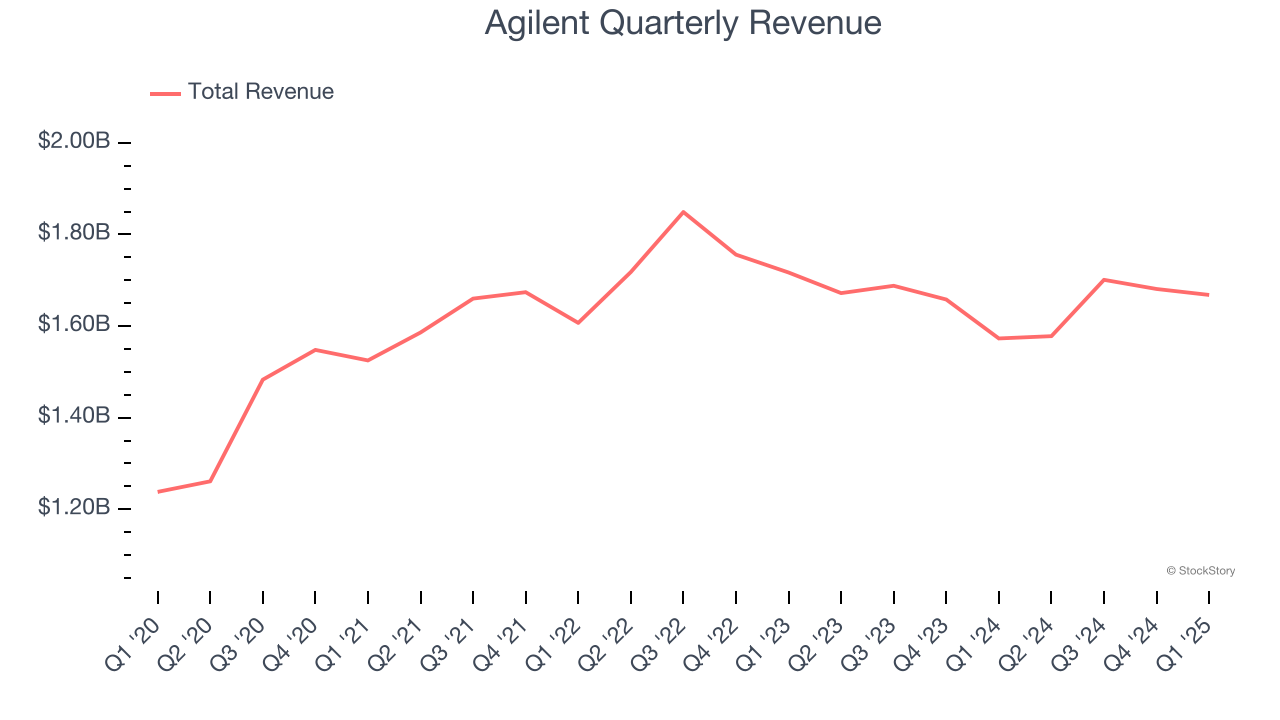
We at StockStory place the most emphasis on long-term growth, but within healthcare, a half-decade historical view may miss recent innovations or disruptive industry trends. Agilent’s performance shows it grew in the past but relinquished its gains over the last two years, as its revenue fell by 3% annually. 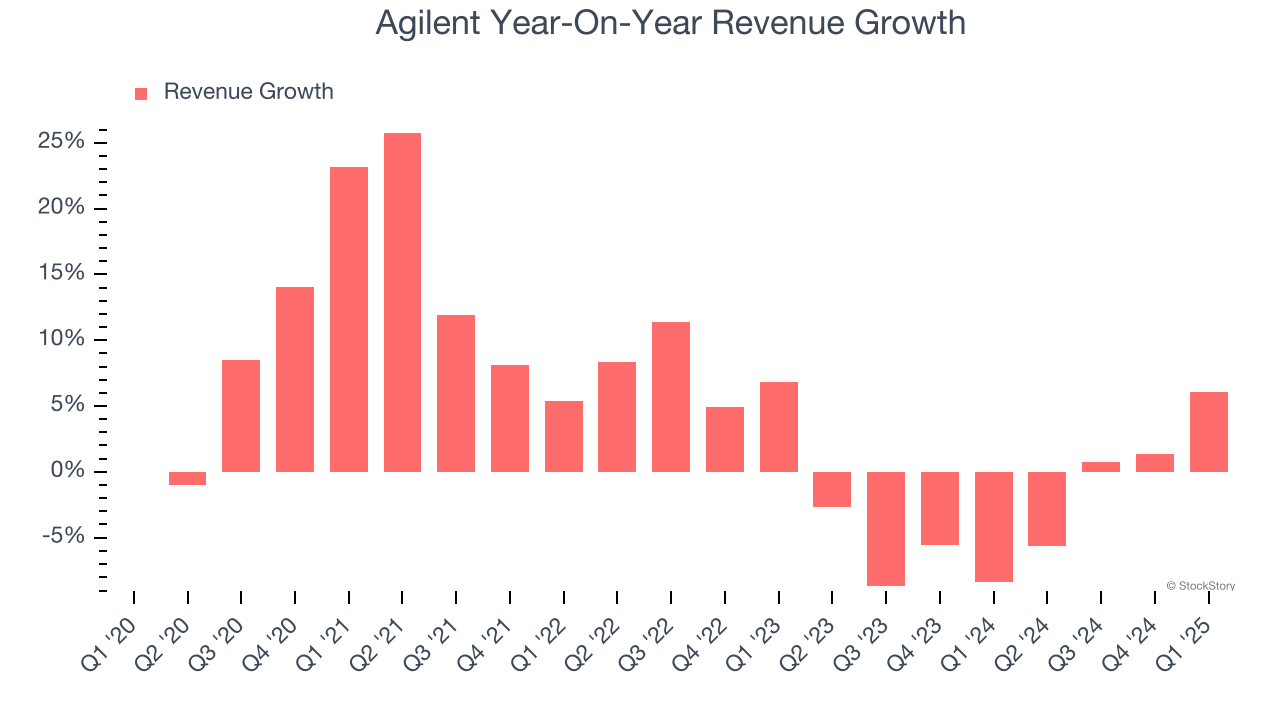
We can better understand the company’s sales dynamics by analyzing its organic revenue, which strips out one-time events like acquisitions and currency fluctuations that don’t accurately reflect its fundamentals. Over the last two years, Agilent’s organic revenue averaged 3% year-on-year declines. Because this number aligns with its normal revenue growth, we can see the company’s core operations (not acquisitions and divestitures) drove most of its results. 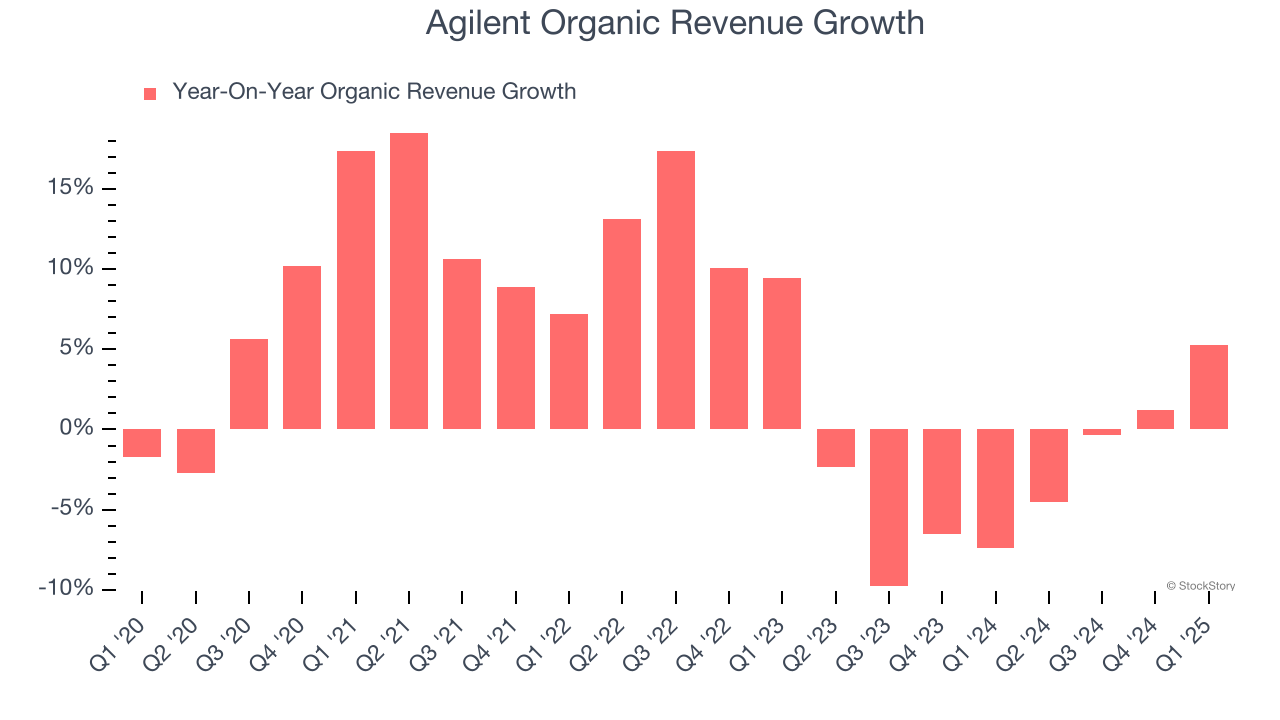
This quarter, Agilent reported year-on-year revenue growth of 6%, and its $1.67 billion of revenue exceeded Wall Street’s estimates by 2.7%. Company management is currently guiding for a 5.2% year-on-year increase in sales next quarter.
Looking further ahead, sell-side analysts expect revenue to grow 3.8% over the next 12 months. Although this projection implies its newer products and services will fuel better top-line performance, it is still below average for the sector.
Software is eating the world and there is virtually no industry left that has been untouched by it. That drives increasing demand for tools helping software developers do their jobs, whether it be monitoring critical cloud infrastructure, integrating audio and video functionality, or ensuring smooth content streaming. Click here to access a free report on our 3 favorite stocks to play this generational megatrend.
Operating Margin
Operating margin is an important measure of profitability as it shows the portion of revenue left after accounting for all core expenses – everything from the cost of goods sold to advertising and wages. It’s also useful for comparing profitability across companies with different levels of debt and tax rates because it excludes interest and taxes.
Agilent has been an efficient company over the last five years. It was one of the more profitable businesses in the healthcare sector, boasting an average operating margin of 21.5%.
Analyzing the trend in its profitability, Agilent’s operating margin rose by 1.7 percentage points over the last five years, as its sales growth gave it operating leverage. Zooming into its more recent performance, however, we can see the company’s margin has decreased by 2.6 percentage points on a two-year basis. If Agilent wants to pass our bar, it must prove it can expand its profitability consistently.

This quarter, Agilent generated an operating profit margin of 18%, down 5.1 percentage points year on year. This contraction shows it was less efficient because its expenses grew faster than its revenue.
Earnings Per Share
We track the long-term change in earnings per share (EPS) for the same reason as long-term revenue growth. Compared to revenue, however, EPS highlights whether a company’s growth is profitable.
Agilent’s EPS grew at a remarkable 11.2% compounded annual growth rate over the last five years, higher than its 4.8% annualized revenue growth. This tells us the company became more profitable on a per-share basis as it expanded.
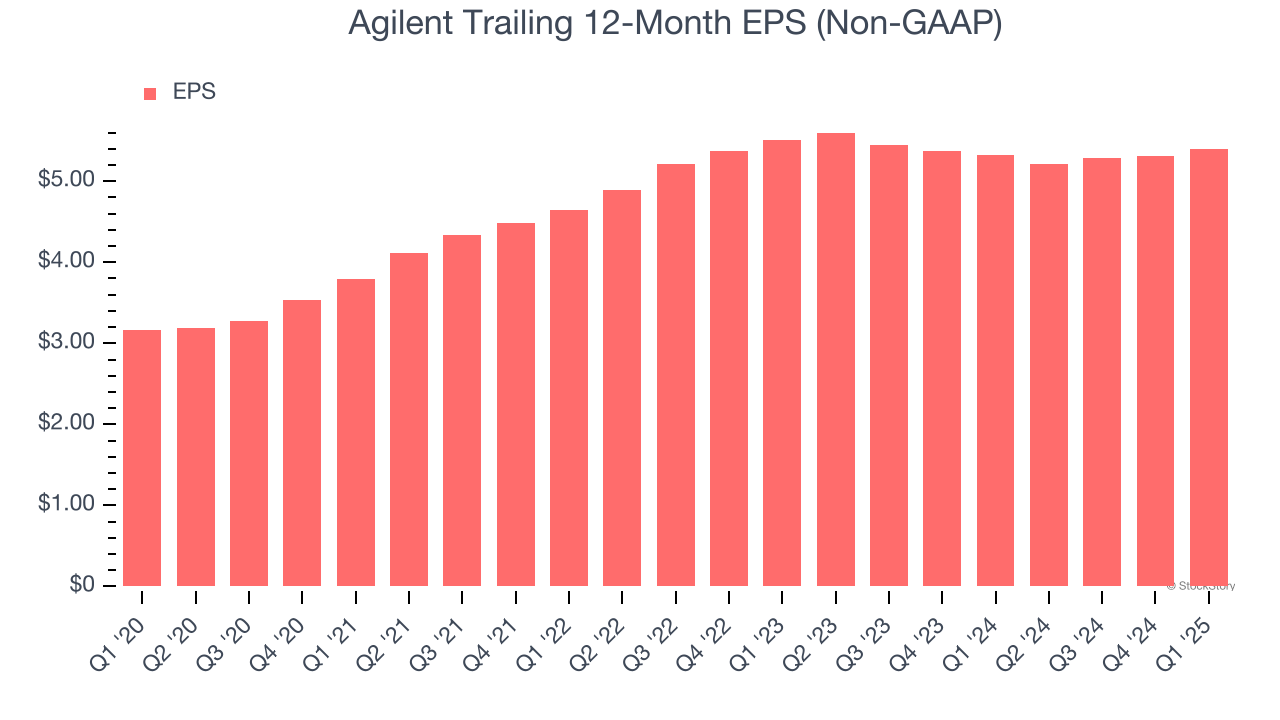
We can take a deeper look into Agilent’s earnings to better understand the drivers of its performance. As we mentioned earlier, Agilent’s operating margin declined this quarter but expanded by 1.7 percentage points over the last five years. Its share count also shrank by 8.7%, and these factors together are positive signs for shareholders because improving profitability and share buybacks turbocharge EPS growth relative to revenue growth. 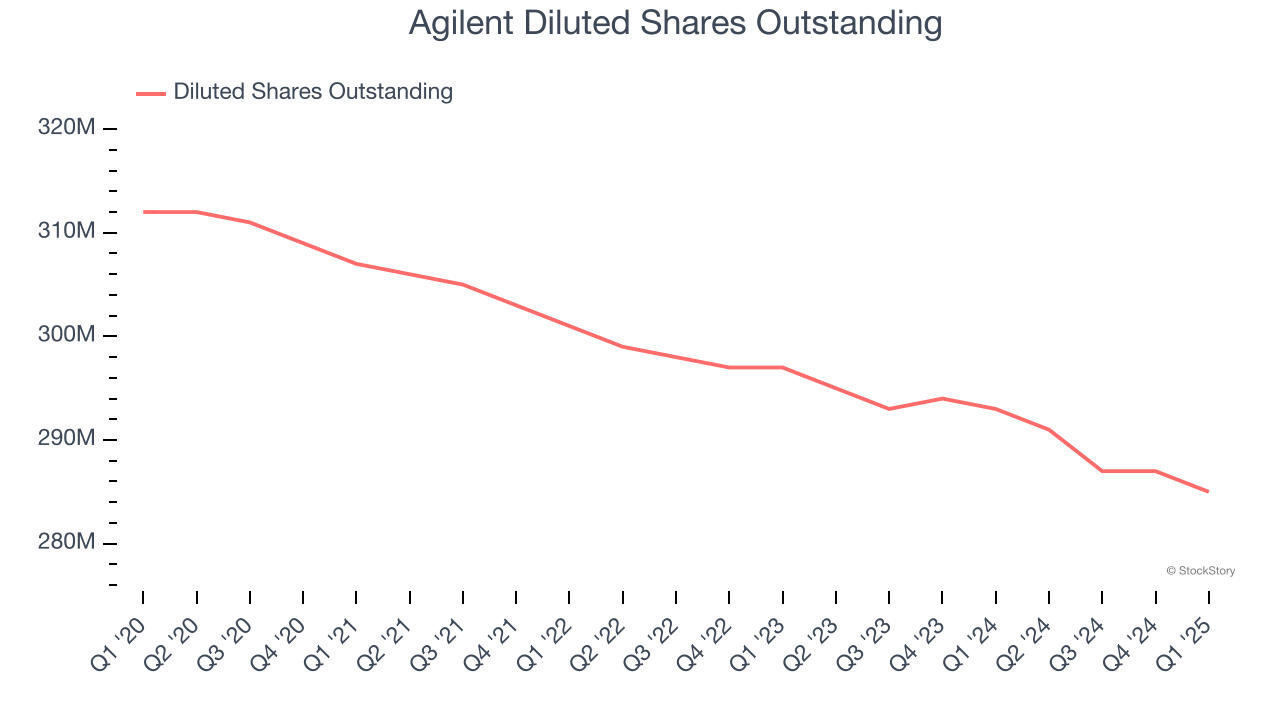
In Q1, Agilent reported EPS at $1.31, up from $1.22 in the same quarter last year. This print beat analysts’ estimates by 3.6%. Over the next 12 months, Wall Street expects Agilent’s full-year EPS of $5.40 to grow 7.7%.
Key Takeaways from Agilent’s Q1 Results
We enjoyed seeing Agilent beat analysts’ organic revenue expectations this quarter. We were also glad its revenue outperformed Wall Street’s estimates. Adding to the good news, Agilent raised its full-year revenue guidance. Zooming out, we think this was a good quarter. The stock traded up 6.2% to $117.70 immediately following the results.
So should you invest in Agilent right now? When making that decision, it’s important to consider its valuation, business qualities, as well as what has happened in the latest quarter. We cover that in our actionable full research report which you can read here, it’s free.








